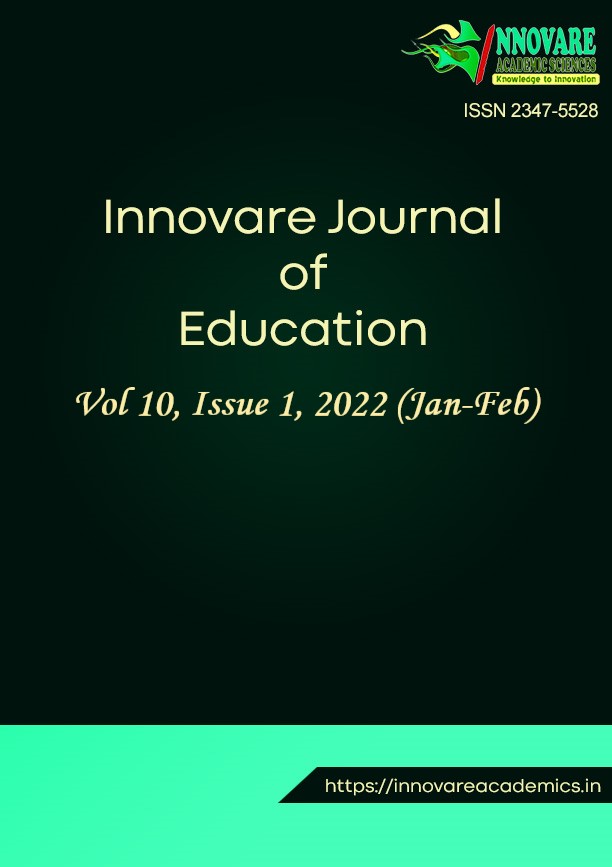The Harmony of Woman Body in Galih Reza Suseno Paintings
DOI:
https://doi.org/10.22159/ijoe.2022v10i1.43281Keywords:
woman body, painting, spirituality, lifeAbstract
Painting as the work of art represents the values that the artist believes in interpreting life based on personal experiences and point of views. This study aims to explore various representations of harmony values in women’s bodies in Galih Reza Suseno paintings. The study was conducted at Bangunharjo, Sewon, Bantul, Indonesia during July-December 2020. This study used a qualitative method with an embedded single case study approach. The results showed Galih painted based on Imago Dei's concept, which is a value in Christian teachings, which means that man was created similar to God. Galih presents women's bodies in paintings based on the view that the world of imagery often deceives modern women. Galih defines women, not as objects but subjects who become themselves and are entitled to their bodies. Visualization of women's bodies in various gestures, expressions, and imagery represents the values of harmony within the spirituality of life.
Downloads
References
Alolaiwi, H. N. S. (2017). Gender trouble and the tragic black Woman hybrids IN Clotel, quicksand and passing. Journal of Arts and Humanities, 6(6), 08–14. https://doi.org/10.18533/journal.v6i6.1185
Aramendia-Muneta, M. E., Olarte-Pascual, C., & Hatzithomas, L. (2019). Gender stereotypes in original digital video advertising. Journal of Gender Studies, 29(4), 403–419. https://doi.org/10.1080/09589236.2019.1650255
Baker, S. E. (2017). A glamorous feminism by design? Cultural Studies, 31(1), 47–69. https://doi.org/10.1080/09502386.2016.1167928
Bodjawah, E. K., Seid’ou, K., Sosu, S. A., & Ayim, B. (2018). Materializing the image, imaging the material: African Facemasks in second Life. Journal of Arts and Humanities, 7(4), 22–31. http://dx.doi.org/10.18533/journal.v7i4.1364
Hamamra, B. T. (2020). The misogynist representation of women in Palestinian Oral tradition: A socio-political study. Journal of Gender Studies, 29(2), 214–226. https://doi.org/10.1080/09589236.2019.1604328
Himawan, D. (2006). Menuju ke hulu meraih kejernihan di kepekatan fenomena kebudayaan kontemporer [Heading upstream to achieve clarity in the concentration of contemporary cultural phenomena]. In A. Adlin (Ed.), Spiritualitas dan Realitas Kebudayaan Kontemporer (hal 9–24) [Spirituality and the reality of contemporary culture (pp. 9–24)]. Jalasutra.
Hopner, V., & Chamberlain, K. (2020). Commodifying femininity: The on-line offering of breast augmentation to New Zealand women. Journal of Gender Studies, 29(6), 651–663. https://doi.org/10.1080/09589236.2019.1673153
Ismaili, V. K. (2019). Female representations in byzantine art of Kosova. American Journal of Art and Design, 4(4), 41–47. https://doi.org/10.11648/j.ajad.20190404.11
Isrow, Z. (2017). Defining art and its future. Journal of Arts and Humanities, 6(6), 84–94. https://doi.org/10.18533/journal.v6i6.1207
Kim, E. (2020). Re-feminizing the post-Soviet women: Identity, politics and virginity ceremonies in contemporary Kyrgyzstan. Journal of Gender Studies, 29(6), 706–716. https://doi.org/10.1080/09589236.2020.1758043
Lough, K. (2020). Patriarchal pits: The gendered experiences of female concert photographers. Journal of Gender Studies, 29(7), 820–831. https://doi.org/10.1080/09589236.2020.1821178
Marianto, M. D. (2017). Seni dan daya hidup [Arts and life style]. Scritto Books Publisher.
Moleong, L. J. (2010). Metodologi penelitian kualitatif [Qualitative research methodology]. P T Remaja Rosdakarya.
Rahmani, J., & Tayebinia, M. (2018). Women’s reflexive identity and spirituality case study: Iranian employed, degree-holder women. Pertanika Journal of Social Science and Humanities, 26(T), 197–214.
Ratna, N. K. (2011). Metodologi penelitian kajian budaya dan Ilmu sosial humaniora pada umumnya [Research methodology in cultural studies and social sciences humanities in general]. Pustaka Pelajar.
Rohidi, T. R. (1992). Analisis data Kualitatif [Qualitative data analysis]. UI Press.
Sabana, S. (2002). Spiritualitas dalam Seni r. Kontemporer di Asia Tenggara [Spirituality in contemporary art in South East Asia]. ITB.
Saidi, A. I. (2008). Narasi Simbolik Seni Rupa Kontemporer Indonesia [Symbolic narrative of Indonesian contemporary art]. Isac Book.
Strinati, D. (2016). Popular cultural, Pengantar menuju Teori budaya populer [Popular culture, an introduction to popular culture theory]. Narasi.
Sugiharto, B. (2006). Resistensi gaya hidup: Teori dan realitas: Kebudayaan, filsafat dan Seni: Redefinisi dan reposisi [Lifestyle resistance: Theory and reality: Culture, philosophy and art: Redefinition and repositioning]. Jalasutra.
Sumardjo, J. (2000). Filsafat seni [Philosophy of art]. ITB Press.
Sutopo. (2002). Metodologi penelitian kualitatif [Qualitative research methodology]. Universitas sebelas maret.
Teng, F., & Poon, K.-T. (2020). Body surveillance predicts young Chinese women’s social anxiety: Testing a mediation model. Journal of Gender Studies, 29(6), 623–635. https://doi.org/10.1080/09589236.2020.1728523
Themistokleous, G. (2018). From perception to recollection: A spatiotemporal mediated interaction. Studies in Visual Arts and Communication: An International Journal, 5(2), 1–8.
Wang, P. (2017). An analysis of the heroine of north and south: Margaret Hale as an independent woman. Journal of Arts and Humanities, 6(10), 32. https://doi.org/10.18533/journal.v6i10.1289
Published
How to Cite
Issue
Section
Copyright (c) 2022 NANANG YULIANTO, NARSEN AFATARA, BANI SUDARDI, WARTO

This work is licensed under a Creative Commons Attribution 4.0 International License.





